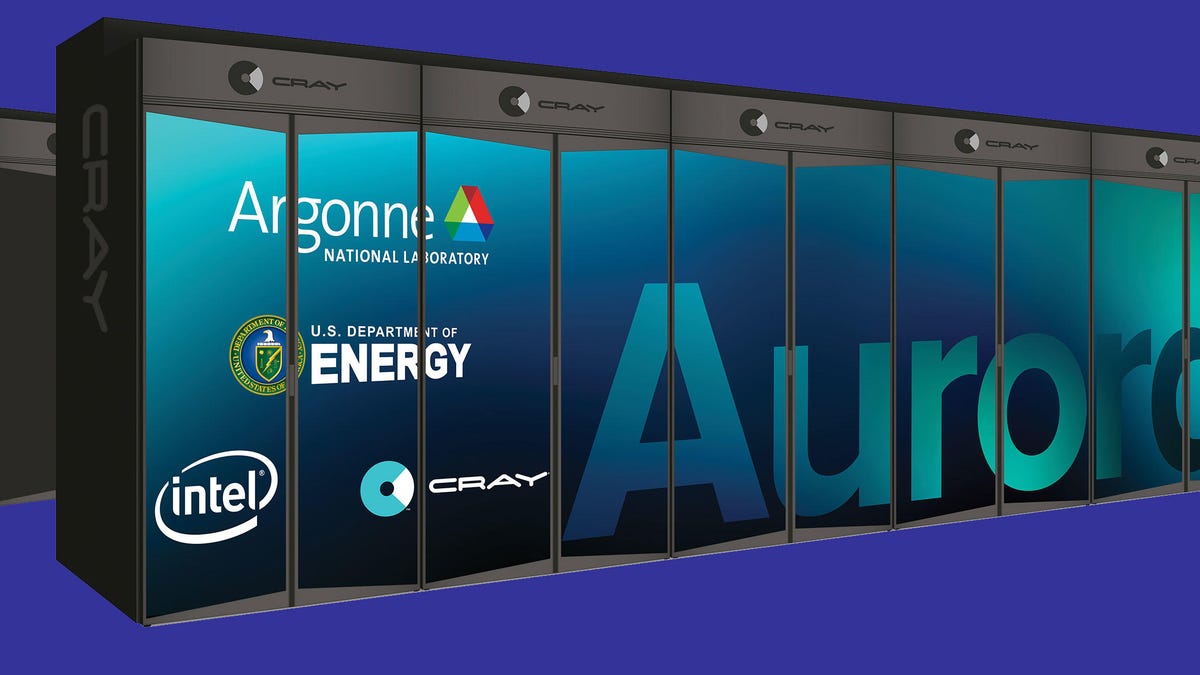Meet Aurora, the US entrant in the global exascale supercomputer race
The Intel-Cray system should arrive in 2021, but Chinese, Japanese and European rivals could come a year earlier.

A mockup of the Intel-Cray Aurora supercomputer
There's a race to build the first supercomputer to cross the "exascale" performance threshold, and the United States on Monday detailed its contender, a $500 million Intel-powered system called Aurora.
The sprawling system, to be built at the Energy Department's Argonne National Laboratory near Chicago, and when it's ready in 2021 will perform a quintillion calculations per second, a level called 1 exaflops. That's five times faster than the current record holder, the IBM-built Summit supercomputer at the DOE's Oak Ridge National Laboratory, and eight times faster than the No. 2 machine, a close cousin called Sierra at Lawrence Livermore National Laboratory.
Those two systems have reclaimed the top spots on the Top500 list of the world's fastest supercomputers from China. But China remains a surging force in supercomputing. A total of 227 of the Top500 machines are in China, compared with an all-time low of 109 for the US on the most recent list, which was released in November. And there's no guarantee Aurora will win the exascale race: China, Japan, and France each could have exascale machines in 2020.
The DOE wants the US to lead in scientific research. Aurora will be used for projects like modeling the universe, predicting the effects of new drugs and designing new materials for solar panels. "The innovative advancements that will be made with exascale will have an incredibly significant impact on our society," Energy Secretary Rick Perry said in a statement.
The exascale race is hot. Hyperion Research predicts $10 billion will be spent on exascale systems worldwide from 2018 to 2022. That's a big chunk of the $130 billion it forecasts will be spent on supercomputers and other technology in the high-performance computing market.
To reach a performance level of a quintillion calculations per second, each person on the planet would have to be able to crunch about 140 million math problems each second.
Aurora will use a variety of Intel chip technologies, including its Xeon processors and Optane memory. Cray, a decades-old company in the world of supercomputing whose brand has survived multiple corporate takeovers, will build it all into Aurora's 200 server cabinets interconnected with Cray's Slingshot high-speed links.
The Aurora system earlier was planned to begin operations in 2018, but the DOE pushed back its schedule and quintupled its performance in 2017.
Some of the biggest spending for US supercomputers is funded by nuclear weapons simulation work. But Argonne isn't a weapons lab.
"Argonne's Aurora system is built for next-generation artificial intelligence and will accelerate scientific discovery ... to address real-world problems, such as improving extreme weather forecasting, accelerating medical treatments, mapping the human brain, developing new materials, and further understanding the universe," Argonne National Laboratory Director Paul Kearns said in a statement.

